The Art Lawyers Diary: Sharjah Art Foundation Brings Together Over 150 Artists and Collectives for Sharjah Biennial 15
Feb 20, 2023
Thinking Historically in the Present (February 7 - June 11, 2023)
Sharjah is the United Arab Emirates’ third largest emirate with coastline on both the Arabian Gulf and Gulf of Oman and known appropriately as the cultural and intellectual center of the UAE. I had never been to the Sharjah Biennial; however, I was drawn by press that Okwui Enwezor, the much beloved and respected curator whose 1997 Johannesburg Biennial and Documenta 11 posed a fundamental restructuring of the paradigm of the biennale, had conceived this as his last biennial prior to his premature death. Sheika Hoor bint Sultan Al Qasimi, President of the Sharjah Art Foundation and curator of the Sharjah Biennial since 2009, in her curatorial statement acknowledges the critical guidance of Enwezor: “First, he dislocated the biennial from its comfortable seat of origin, expanding the site.” Thus, Hoor Al Qasimi moves beyond nationality centered pavilions. The Sharjah Biennial in its curatorial direction expands beyond the historical core into landscapes and communities that make up the Emirate of Sharjah, such as the Kalba Ice Factory, Kalba Kindergarten, the Khalid Bin Mohammed School (The Africa Institute), the Old Al Dhaid Clinic, the Khorfakkan Art Centre (the old Court House), the Al Hamriyah Studios and the Old Al Jubail Vegetable Market. Also premiering in SB15 are works that engage with the local context of Sharjah. Kerry James Marshall proposes an outdoor installation in the form of an archaeological find inspired by fact, myth and tales, while Kambui Olujimi, Mirna Bamieh and Veronica Ryan present site-specific projects that converse with and recontextualize the old and new architecture of the Foundation.
Secondly, “Enwezor decentered the discursive myths of the European art canonical avant-garde, critiquing the conservatism and social detachment of its vision of modernity….” Sharjah Biennial 15 is a “transnational nexus of global civic enunciation.” Artist identifiers do not refer to the artist’s nationality except indirectly to provide context for artistic practice in the Guidebook (an essential reference tool for visitors to maximize the viewing experience). Carrie Mae Weems presents The In Between (2022-2023) that pays homage to Enwezor, a multimedia installation composed of elements to foreground the in between, a point of departure neither here or there where Enwezor sought to make cultural institutions and art canonical histories more inclusive and representative of non-western identities.
Thinking Historically in the Present: The Notion and Meaning of Time
The phrase that is the guiding principle of the biennial — “thinking historically in the present” — was introduced by Enwezor in 2005. Al Qasimi states “he invoked the dislocation of belonging” and the “disjunction of time as the shared affective core felt across the post-colonial world. How, he asked us to imagine, do you live these disjunctions and experience these disjunctions and experience these dislocations from the inside?” This principle provides an amazing source for archival research, inspiration and creativity for the selected artists. The impact of colonial histories, global politics, immigration, incarceration, traditional narrative structures, indigenous folklore and communal practices enable the artists through film, multimedia, painting, sculpture and performance, to invite viewers to reconfigure ways to view non-canonical wisdom or understand contemporary problems like power, food trade, and climate change as caused by other than as explained by the dominant power structure. Artists create narratives to interweave current political problems and turmoil with a rich historical past mythical and forgotten histories to enable both artist and viewer to search for identity and new ways of resistance, reconciliation and politics. Not surprisingly, the theme causes us and the participating artists to reflect on ancient epistemologies and time as a philosophical, historical and existential concept. Not surprisingly, the theme causes us and the participating artists to reflect on ancient epistemologies and time as a philosophical, historical and existential concept. Contradicting the tendency of Eurocentric historiographies of the Gulf to frame oil expeditions as the beginning of the emirate history, Al Qasimi begins her statement by referencing that “tales and allegories of Sharjah and the Gulf were historically mediated by soothsayers whose intuition served as a conduit to transmit messages from other worlds… These stories were vessels for the accretion of ancestral wisdom relayed orally from one generation and reference to Sharjah and its beginnings dating from archeological finds to 10,000 years ago… In Sharjah’s curatorial and historic models for the Sharjah Biennial 15 there is guidance with the chronotype of ‘deep time’ and the Kharareef of our ancestors.” Wangechi Mutu presents a new sculptural installation titled My Mother’s Memories, a Mound of Buried Brides (2023), a visual poem which reflects on the resilience of the women who fought for the independence of Kenya in the Mau Mau rebellion.
Wangechi Mutu, My Mother’s Memories, a Mound of Buried Ashes (2023) at Bait Al Serkal.
Time as history is seen in the installations and documentation of many photographers and film makers who were either direct participants in the struggles like Omar Badsha, political activist and trade union leader, who is known as one of the pioneers of anti-colonial resistance art from South Africa, and his work Once We were Warriors: Women and the Resistance in the South African Liberation Struggle (1982-1999); or witness to such struggles like Hiroji Kubuta, Magnum photographer, who documents with the rare vision of an outsider from Japan the end of segregation, the rise of the black panther Party and black power and the antiwar movements. Manthia Diawara’s capacious scholarly and documentary creative process has made a major contribution to the field of Black and African diasporic cultural studies. He presents Angela Davis: A World of Greater Freedom (2023). Together he and Davis unpack the principle cores of Davis’s philosophy: “to deconstruct and contextualize contemporary meanings of life and ecology… to narrate new, multiple and unpredictable social realities.” Sir Isaac Julien’s practice often examines the politics of masculinity, class and race to deconstruct and reclaim black histories. Julien presents Once Again… (Statutes Never Die) (2022), taking its title from the 1954 film of Chris marker and Alan Renais Statutes Also Die (1954) on historical African art and its decline under colonialism. Originally commissioned for the 100th anniversary of the Barnes foundation, the five-channel black-and-white video installation explores the legacies of the philosopher, critic and queer cultural leader Alan Locke and African art collector Albert Barnes, whose collection inspired both Locke and the Harlem Renaissance artists. While not immediately obvious unless one spends the time with this mesmerizing five-channel installation and accompanying sculptures, Julien not only reimagines Locke’s relationship and correspondence with Barnes, but also contextualizes contemporary efforts for reparations, gesturing at the critical dialogue which can inspire such claims. Al Qasimi’s goal to build a platform that links Sharjah as a center for knowledge production to the intersectional discourses of the postcolonial constellation, while remaining grounded in collaborative methodologies and civic engagement, is advanced by presenting us such discourse and conversation as presented by Julien, given the clear focus on homosexuality and its acceptance, given the fact that Sharjah is one of the more conservative of the Emirates where prayer is regular, women are veiled and alcoholic consumption is forbidden.
Isaac Julien, Once Again… (Statues Never Die) (2022) at Calligraphy Square.
Coco Fusco, an interdisciplinary artist and writer, engages with themes of power, race and the sociopolitical ramifications of her Cuban exile. She has also studied an era of Cuba’s history, characterized by the persecution of those deemed “ideologically divergent.” The term, introduced by Raul Castro in the 1970’s, extended to “all whose personal and political identities permitted them from submitting the revolutionary, effectively criminalizing dissent.” The Eternal Night (La Noche Eternal) (2022) is a poetic feature length black and white film which reactivates and reimagines the political conflicts precipitated by the modern nation-building process in Cuba is based on the life of writer and former political prisoner Nestor Diaz de Villegas. Researched for over two years and based on archival footage mixed with live performances, the film follows the lives of a poet, a young Evangelical man and a seasoned stage actor charged with an assassination attempt on Castro. Guided by the actor, the three endeavor to survive incarceration with wit, strength of will and shared love of cinema.”
Poetry, art, theater, and connection to the narratives of a time remembered of the richness of Haitian cultural and intellectual production, spiritual practice as a means of survival and resistance in a world of chaos and irrationality caused by the natural and political tragedy of Haiti is the message of The Living and the Dead Ensemble. It is composed of ten artists, performers, and poets from Haiti, France and the United Kingdom. The Wake (2021) is an immersive and powerful three-channel video that revolves around the charged atmosphere of a night filled with demonstrations, earthquakes and the fire of struggle and pain, rebirth and chaos. “Amid these flames, a community dreams of flight, travel, and alliances among diasporas, invoking the restlessness that haunt our electronic realms. We, as viewers, share the pain and trauma-immured in the hope that the goal to create a narrative based on the weaving of the insane present with the mythical, colorful and often forgotten histories of the past can lead to rebirth.”
Time as memory and lived history, including its impact on those who have suffered systematic abuse and institutional complicity fuels the performances and photographic art work of Vivan Sundaram, a leading artist of New Delhi’s intellectual and artistic community for six decades. Sundaram’s photography-based project, Six Stations of a Life Pursued (2022), signifies “a journey with periodic halts that release pain, regain trust, behold beauty, recall horror and discard memory - a life pursued. History acquires an allegorical mode yet the narrative rewinds history.”
Vivan Sundaram, Six Stations of a Life Pursued (2022) at Al Mureijah Square.
In Parliament of Objects (2023) (see above), Ibrahim Mahama creates as assemblage of found objects, including abandoned seats, desks, handwritten textbooks, and combines them with Polaroid images of institutional buildings in Ghana. Together, these objects create a timeline of freedom, “a country, and its people, claiming the right to their independence from the British colonizer—a journey that came to an end 65 years ago.”
Hajra Waheed’s Hum II (2023) “explores humming and other vocal practices as a means to consider radical forms of collective and sonic agency… Consisting entirely of voice, the composition features seven songs central to popular uprisings, mass social movements and anti-colonial struggles across the Americas, Africa and Asia where women have been at the forefront. Despite being either suppressed or banned, these songs and musical forms continue to be sung widely, preserved and passed down by women to a new generation of youth.” The artwork is both seductive in drawing the visitor to what purports to be a comfortable mediative experience. At the same time, the sound piece represents resistance to power and aggression. One thinks in terms of power and surveillance of the Jordanian-born artist based in Dubai Lawrence Abu Hamdan, a previous a participant in the Sharjah Biennial.
Time as an existential construct created by a society and its durational measurement relative to traditional beliefs, nature and the universe is dramatically presented in the five-screen multichannel mesmerizing installation by Sir John Akomfrah. The brilliance and sheer poetry of Akomfrah’s practice in pushing the boundaries of the cinematic form to explore radical ways of understanding history is taken literally and figuratively to new levels in the new film commissioned for Sharjah 15, Arcadia (2023). Arcadia “tackles the ecological implications of settler colonialism, extractive capitalism and the extinction of microorganisms... The artist extent the oral as well as representational history of various indigenous cultures to create a multiscreen installation that combines events, memories, landscapes and characters in the form of a mixed media collage. The result is an immersive experience of a less human centric view of postcolonial reality that brings to the floor the often-destructive relationship between humans and inorganic matters in an already fragile ecology.” If there is one work that could be said to embody the themes of memory, identity, postcolonialism, temporality and the politics of aesthetics that pervade so many of the eloquent artistic statements in their manifest forms, media and materials, it is for me, Arcadia. I am thrilled to learn that Akomfrah will represent the UK in Venice in 2024.
John Akomfrah, Arcadia (2023) at Al Mureijah Square.
Environmental Historical Memory, Diasporic Labor, Food, Shelter, Power and Extraction of Resources
Not surprisingly many artists draw on indigenous epistemologies to examine the future of shared resources. Others investigate the meaning of food in socio-political and cultural context on a local and global scale. Elia Nurvista reflects on concepts within food discourse related to “globalization, material extraction, exploitation and exotification.” Mirna Bamieh’s work in the Old Al Jubail Vegetable Market, Sour Things (2023) (see above), uses fermentation “as a metaphor for zooming into micro-words of encapsulated multitudes in order to look at life, cities, people, relationships and culture.” Joiri Minaya’s work investigates colonial hierarchies particularly in reference to the repetitive fixation of the global north on the tropics as an “abundant land and society poised for extraction and servitude, visually linking ethnobotany and exoticism, tropical identity and its commodification” (ie: Gaugin).
Mandla is a queer and agender writer performer who presents a video installation taken from As British as A Watermelon (2019), a performance examining frameworks of systemic racism through the bounds of a structure of fluorescent lights and watermelons.
Mandla, As British as a Watermelon (2019) at the Africa Institute
Carolina Caycedo’s Agua Pesada / Alma Althaquil [Heavy Water] (2023) is inspired by the aludeles, bottomless-pot furnaces of the Almadén mercury mines in Spain, the largest and most prolific mercury concentration in the world. The work is intended to “contribute strength of environmental historical memory considers fundamental force in defense of human and nonhuman entities against destructive violence.
Carolina Caycedo, Agua Pesada / Alma Althaquil [Heavy Water] (2023) on view at Calligraphy Square.
Felix Shumba explores social trauma in an attempt to interrogate ways in which history is constructed. Researching in the historic archives of his native Zimbabwe, he presents Ruwa River (2022) and Nocturnal Body (2022) revealing from his research the lethality of the government’s suppression of the insurgency through the use of chemical weapons. For Shumba, the materiality of charcoal parallels the suffocation of black lives.
Felix Shumba, Ruwa River (2022) and Nocturnal Body (2022) at the Old Al Dhaid Clinic.
Nari Ward presents Duty Colossus (2023), a site-specific installation in a former fish factory composed of two elements, a dhow and a Jamaican fish trap. For Ward, one important element is the space in between. Even more important, Ward told me is the fish trap as a metaphor for time. The portal functions through an interplay of seduction and entrapment. With reference to time, Ward quotes from Jimmie Durham: “we live with our experiences always in the past as echo and reverberation of the present.”
Artist Nari Ward in front of his work, Duty Colossus (2023) at Kalba Ice Factory.
Doris Salcedo presents Uprooted (2020-2022), 804 dead trees that are sculpted and assembled to depict a house. “Structurally uninhabitable, the work symbolizes the refugee’s predicament—a seemingly permanent state of impermanence… attributing the cause of this forced movement of people most fundamentally to the capitalist destruction of the environment, Salcedo manipulates organic material into monumental sardonic artefact.”
Doris Salcedo, Uprooted (2020-2022) at Kalba Ice Factory.
Maria Magdalena Campos-Pons “grapples with the coordinates of diasporic identity formation: migration, displacement, collective memory, spirituality and gender.” In her work, Murmullo Familiar [Family Whisper] (2021-2023), “alongside beds of red sand collected from Mleiha, a desert in Sharjah that is reminiscent of the soil in Mantazas, Cuba, a set of glass stools, cast from one passed down by Campos-Pons’ family across generations, operate as metaphors of absence, representing those lost or unaccounted for by the ruptures of Afro-Cuban history …” Campos-Pons will have a solo exhibition at the Brooklyn Museum at September 2023.
Maria Magdalena Campos-Pons, Murmullo Familiar [Family Whisper] (2021-2023) at Al Mureijah Square.
Rachid Hedli’s performance of Gueles Noires (2016), a French term used as slang for soot covered miners is a brilliant work of choreography superbly executed by his company Cie Niya, composed of a composer and performers, sons and grandsons of immigrant miners from the French Pas de Calais region. The atmospheric dance blends narrative and hip hop elements with breaking and popping movements to emulate the rhythm of hard labor set to a soundtrack of heavy machinery the piece pays tribute to Hedli’s father who died of lung cancer.
Tania El Khoury is a live performance artist. Her work is drawn from the political realities of the Lebanese Civil war and its aftermath. I attended El Khoury’s performance The Search for Power (2018), limited to an investigation around a dinner table for thirty people inviting us to track her research into power shortages in Lebanon which interfered with her wedding celebration at which we are recreating the investigation and experience. During the Biennial, “an audio guide helps audiences navigate the dense archives amassed during El Khoury’s … transnational research, locating electricity at the intersection between colonial legacies, political and economic hierarchies and everyday acts of resistance, survival and sabotage.”
Tania El Khoury, The Search for Power (2018) at the Old Jubail Vegetable Market.
Each Biennale has its own character and traditions as each varies within its own paradigm from biennial to biennial. From what I have heard of attendees of the past, Sharjah 15 is at the pinnacle, benefitting from the collective wisdom and experience of the past. One must acknowledge the stunning curatorial success of Hoor Al Qasimi in both the selection of artists and the installation of the works in each exhibition, including the selection of sites. Each artist is represented by multiple works and located in conversation with adjacent artists. While there is a denial of a single curatorial voice, the El Quasim’s decades of experience is reflected in this important edition of the Sharjah Biennial. Notwithstanding this singular curatorial excellence, the spirit of being guided by one another, another stated aim, is achieved, “by our ever-evolving cross cultural solidarity.”
A Practical Guide to the Sharjah Biennial 15: Thinking Historically in the Present
Recommended Artists*****
The Sharjah Art Museum
There are numerous retrospective historical photographs, indigenous artists, in addition to numerous other excellent creations and works by known and some lesser-known artists. Anybody visiting the museum should carefully choose, in accordance to the Sharjah Biennial Guidebook, to their personal taste.
Bait Al Serkal
Wangechi Mutu
Helina Metaferia
Manthia Diawara
David Hammons
Hassan Hajjaj
Bank Street Building
Tania El Khoury****
Lee Kai Chung****
Calligraphy Square
Carrie Mae Weems
Isaac Julien
Mithu Sen
Carolina Caycedo
Al Mureijah Square
Mona Hatoum
Maria Magdalena Campos-Pons
Vivan Sundaram
John Akomfrah
Hajra Waheed***
Bouchra Khalili***
Old Al Jubail Vegetable Market
Tania El Khoury
Elia Nurvista
Mirna Bamieh
Joiri Minaya****
Khalid Bin Mohammed School (The Africa Institute)
The Living and the Dead Ensemble
mandla
The Flying Saucer
Kambui Olujimi
Al Hamriyah Studios
Mary Sibande
Veronica Ryan
Hank Willis Thomas
Nabil El Makhloufi
Old Al Diwan Al Amiri
Kerry James Marshall
Yinka Shonibare
Joiri Minaya
Barbara Walker
Old Al Dhaid Clinic
Cao Fei
Felix Shumba
Laura Huertas Millán
Ibrahim Mahama****
Rehab Eldalil
Pushpakanthan Pakkiyarajah
Kalba Ice Factory
Nari Ward
Doris Salcedo***
Khorfakkan Art Centre
Coco Fusco
Theaster Gates
Hotels
The Chedi Al Bait Sharjah
Sheraton Sharjah Beach Resort & Spa
Coral Beach Resort Sharjah
Food
The Saturday Night Taste of Arab Buffet is Extraordinary!
For an alternative art universe with respect to thinking historically in the present, our readers may wish to spend several days in the Disneyland that is Dubai visiting the Museum of the Future, Leila Heller Gallery’s Tales Under the Gate new sculpture installation and the Dubai Art Fair (March 1-5, 2023).
Works at Tales under the Gate (2023), Dubai.
* Barbara T. Hoffman is a preeminent international art lawyer with an undergraduate degree in art history. She has been a passionate follower of the contemporary art scene for years and a regular attendee at the Venice Biennale, Documenta, and other international art events since the early 1980’s. She writes frequently on law, art and politics for a variety of publications and is a member of the International Association of Art Critics. She serves on the Board of Performa, the Visual Performance Biennale, founder State Volunteer Lawyers for the Arts and is on MoMA's Contemporary Arts Council and Black Arts Council. She serves on the board of several artist endowed foundations and advises museums and artist foundations on issues of governance, including board development and conflict of interest and intellectual property. www.hoffmanlawfirm.org.
** Quotes included in the article, unless otherwise stated by the author, are taken from the Guidebook to the Sharjah Biennial 15: Thinking Historically in the Present.
*** Artists who received the Sharjah Biennial Prize at Sharjah Biennial 15: Thinking Historically in the Present.
**** Artists who received an honorable mention by the Sharjah Art Foundation jury for their work at Sharjah Biennial 15.
***** This by no means reflects artists not included in the list. Notwithstanding, the author dedicated only five days to viewing the Sharjah Biennial and Inevitably some artists may have been overlooked. It is a matter of time. I would return in a minute for another experience of the Historical Present.
Author
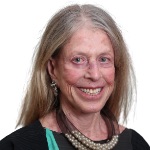
Barbara Hoffman
Barbara T. Hoffman is recognized internationally and nationally as one of the preeminent art, intellectual property, and cultural heritage lawyers. With more than forty years of practice in every aspect of the field, Hoffman has been acknowledged by her peers with leadership positions in the New York City Bar Association and International Bar Association, elected to Super Lawyers, Best Lawyers...

:sharpen(level=0):output(format=jpeg)/wp-content/uploads/2023/02/The-Art-Lawyers-Diary.jpg)


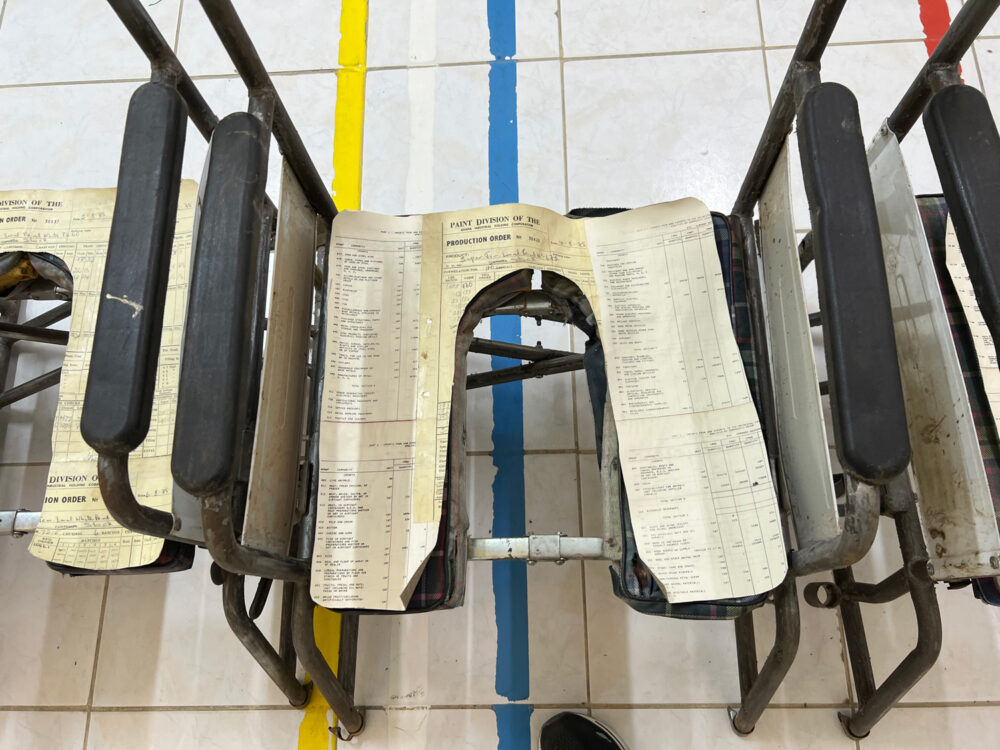
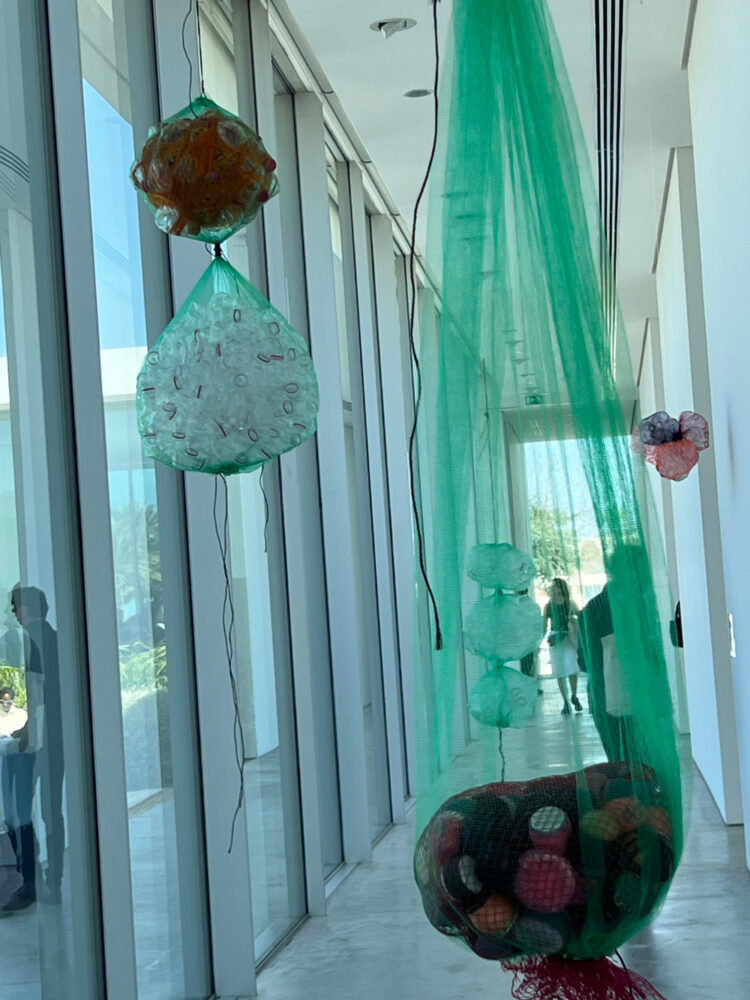




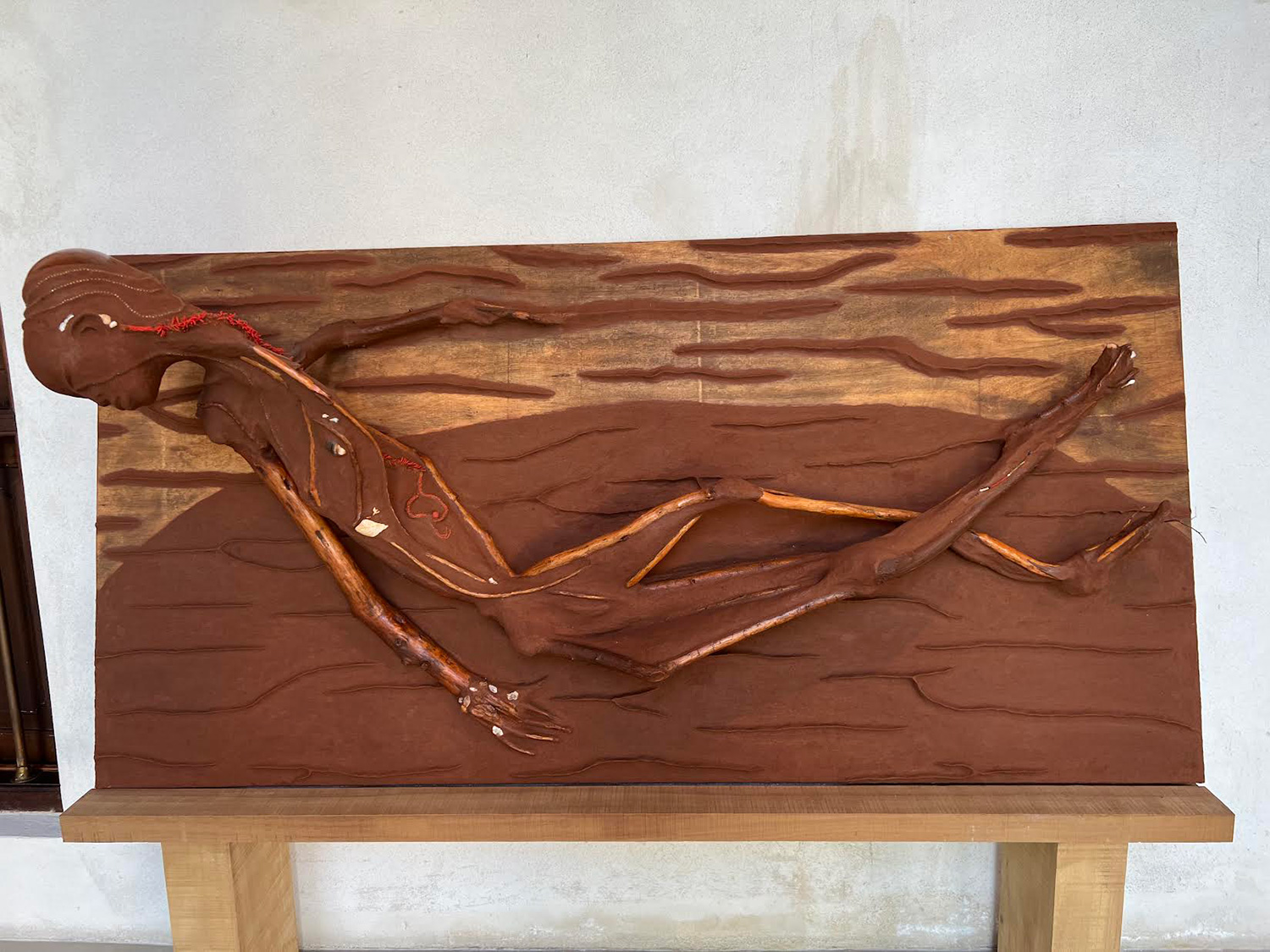
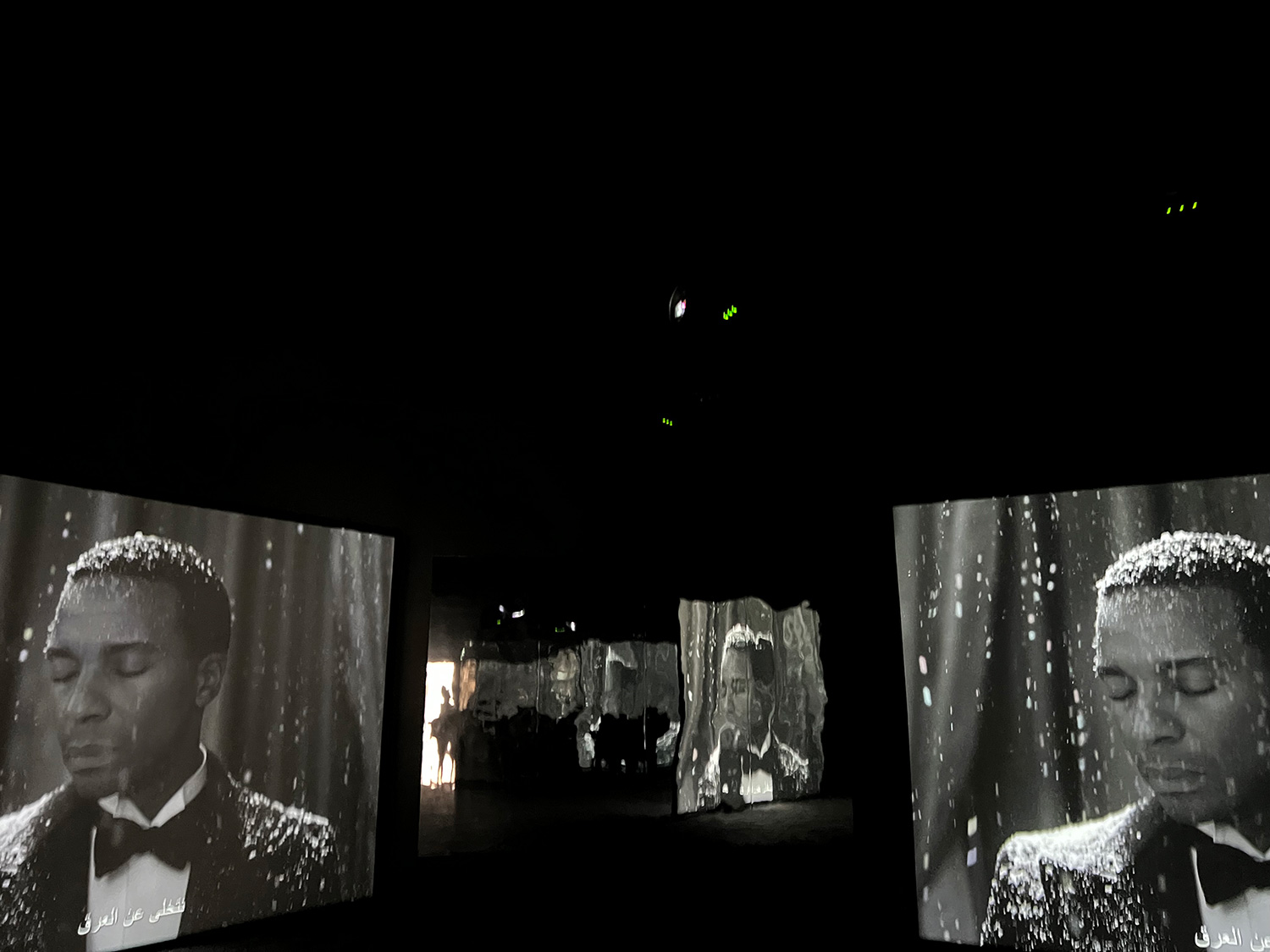


















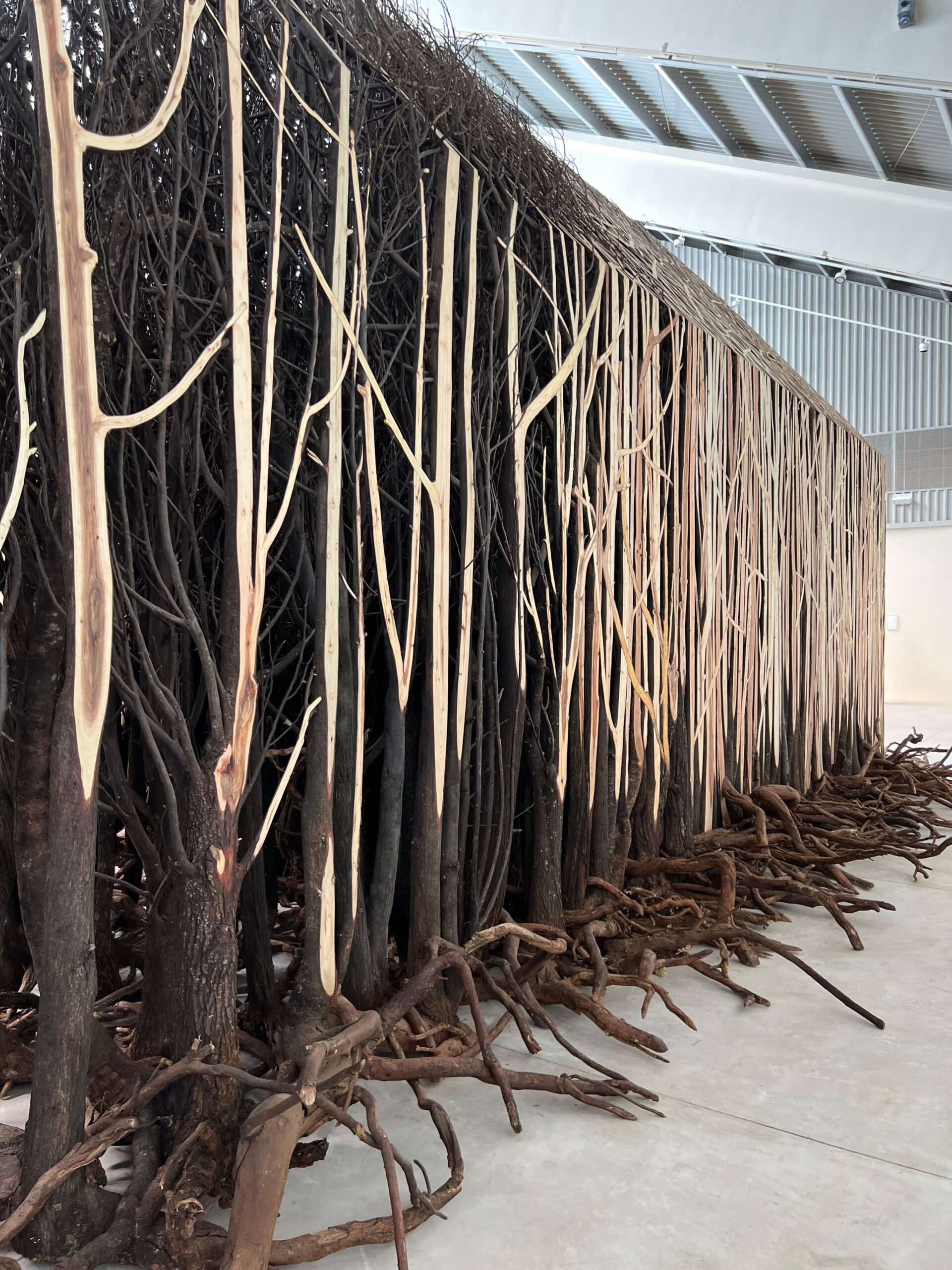



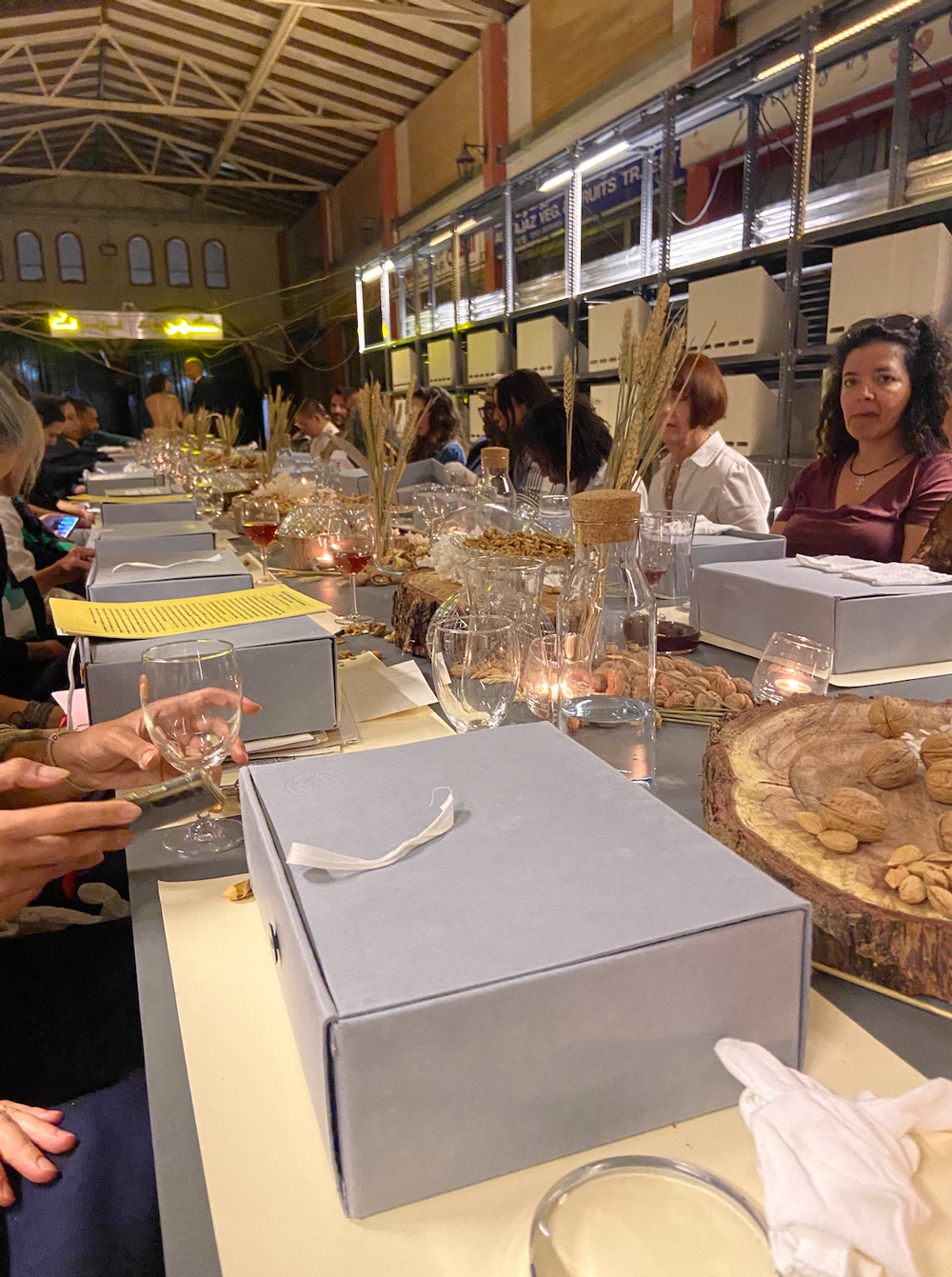



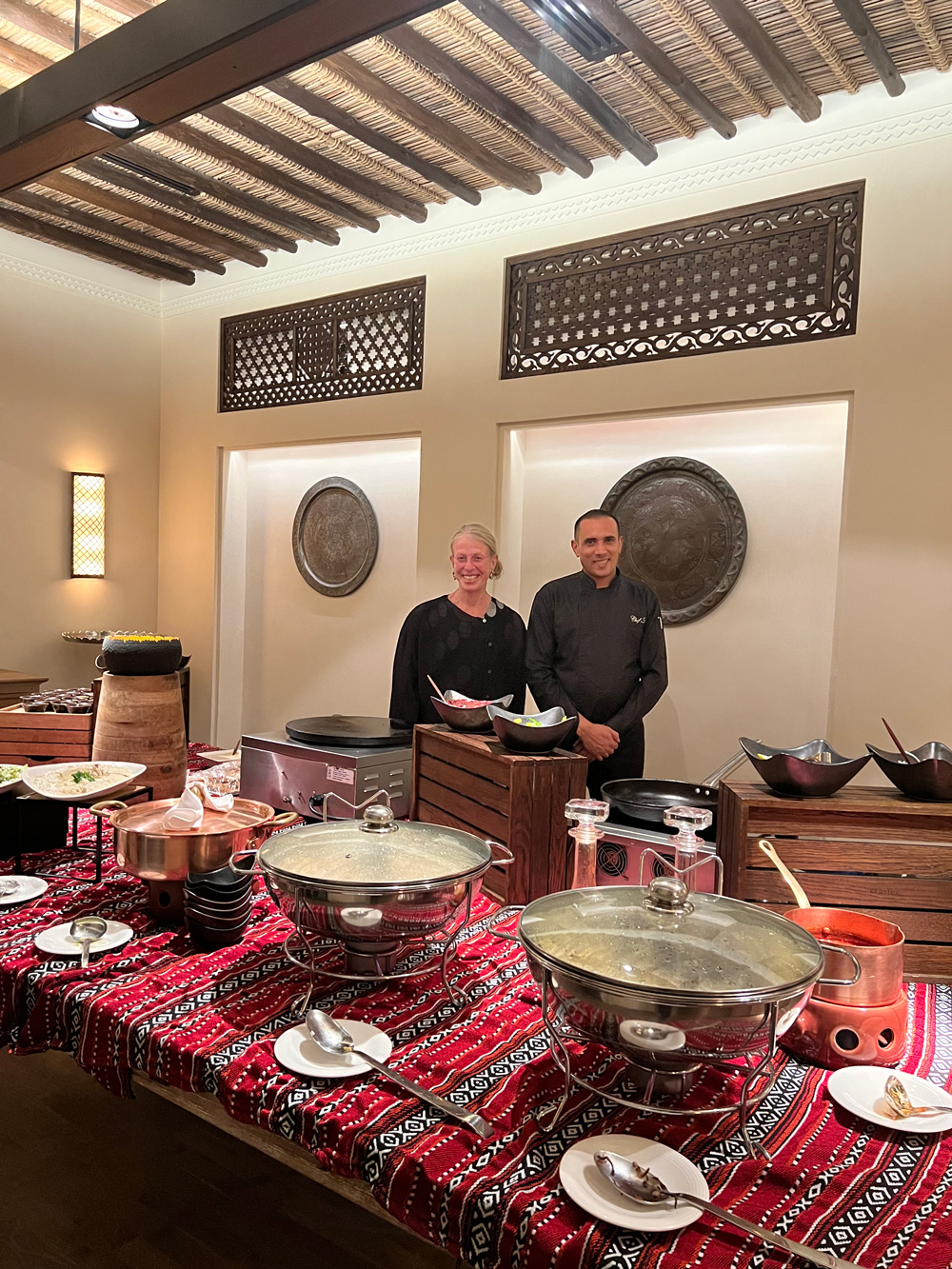

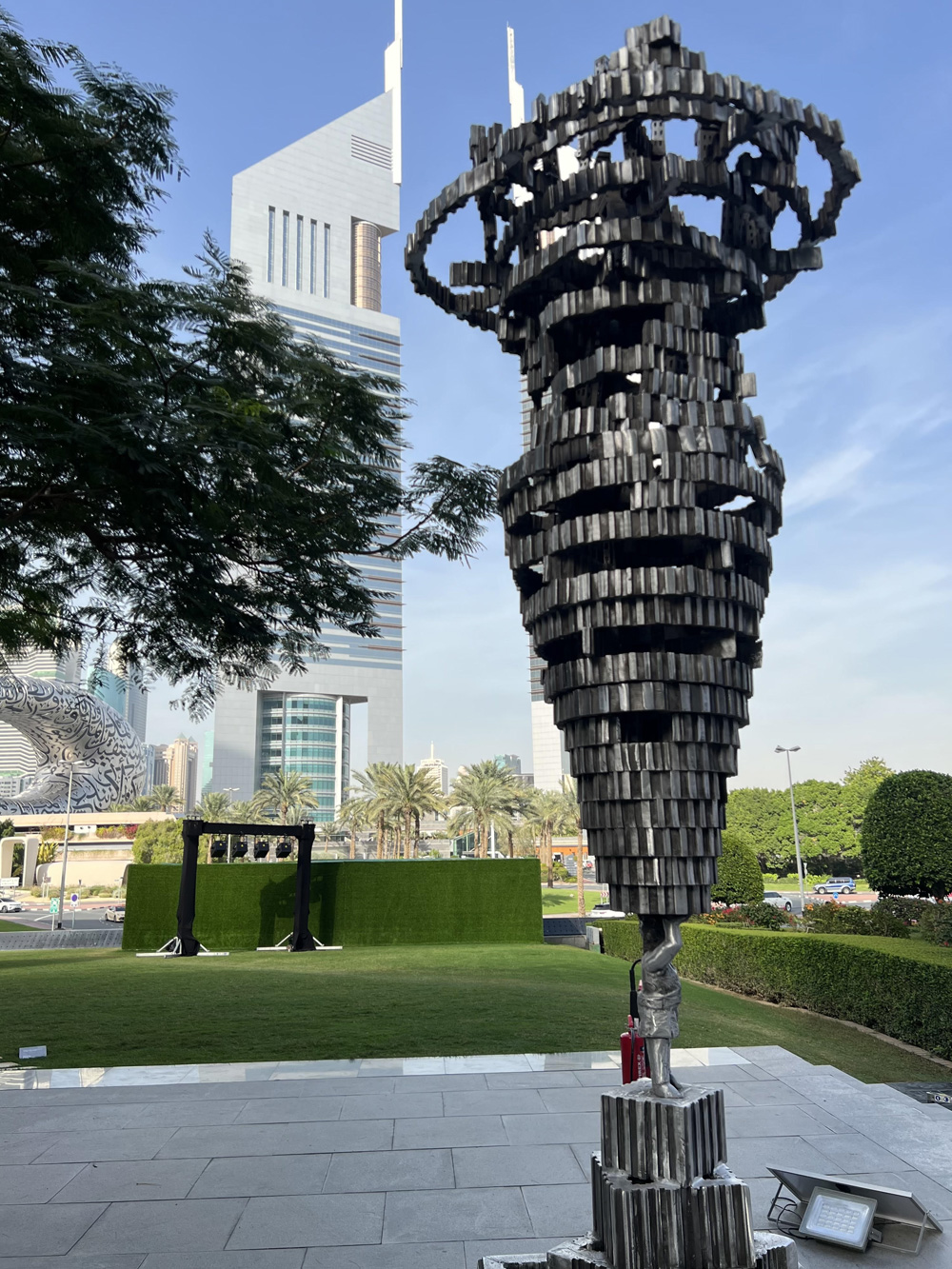
:sharpen(level=1):output(format=jpeg)/wp-content/uploads/2024/05/The-Art-Lawyers-Diary-1.jpg)
:sharpen(level=1):output(format=jpeg)/wp-content/uploads/2024/04/5-Questions-with-Bianca-Cutait-part-2-1.jpg)
:sharpen(level=1):output(format=jpeg)/wp-content/uploads/2024/05/20231208_164023-scaled-e1714747141683.jpg)
:sharpen(level=1):output(format=jpeg)/wp-content/uploads/2024/04/header.jpg)
:sharpen(level=1):output(format=jpeg)/wp-content/uploads/2024/04/5-Questions-with-Bianca-Cutait-part-1-1.jpg)
:sharpen(level=1):output(format=jpeg)/wp-content/uploads/2024/03/5-Questions-with-Alaina-Simone-1.jpg)